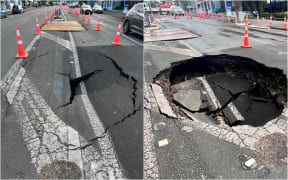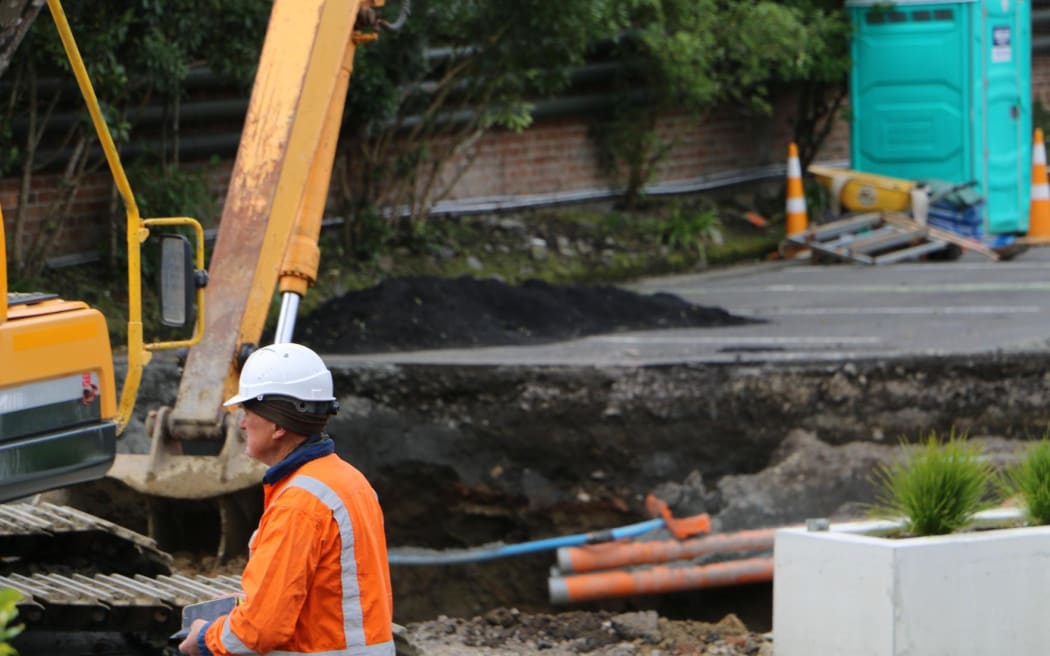
A worker at the site of the sinkhole in Parnell. Photo: RNZ / Jordan Dunn
A main sewer line has collapsed in Auckland, leaving a massive sinkhole, and residents are being warned to not swim at all inner-city beaches.
Watercare said the sinkhole was 13 metres deep. It appeared in a carpark near a construction site on St Georges Bay Road in Parnell.
It was the third sinkhole to appear in the city in recent months.
Watercare chief operations officer Mark Bourne said a wastewater pipe at the top of the Ōrākei Main Sewer burst, causing the hole.
They were alerted to the sinkhole on Monday afternoon.
"Our crews worked until early this morning, removing material to strategically widen the tomo, stabilising the ground and preventing further material entering the pipe," Bourne said.
"Unfortunately, the situation has worsened with the sewer becoming completely blocked this morning, which may be causing overflows elsewhere in the network."
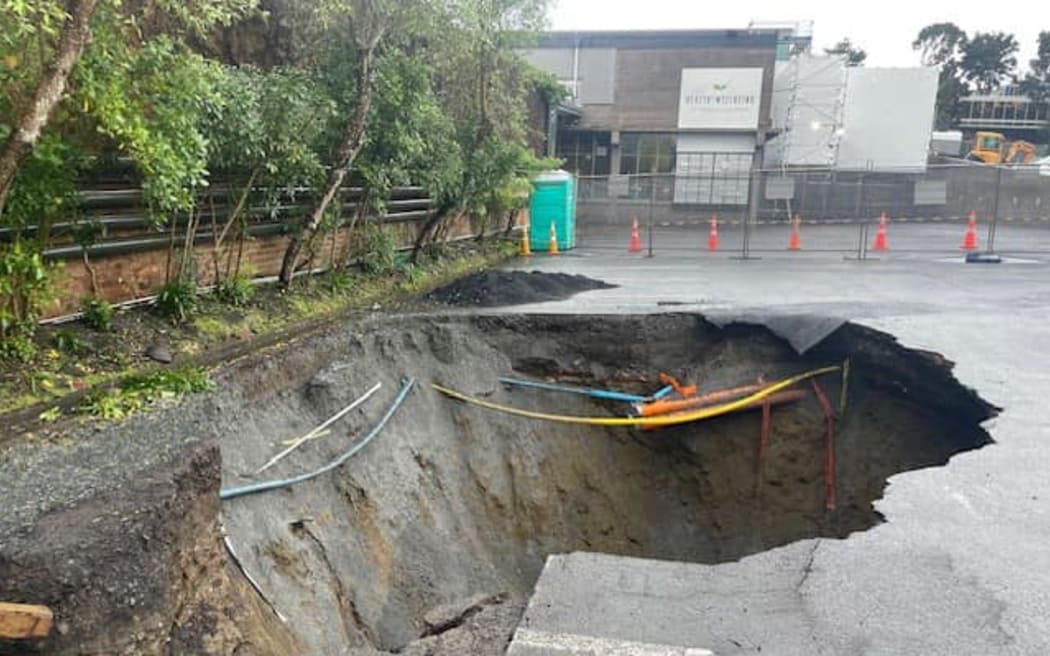
The sinkhole appeared on a private property on St Georges Bay Road. Photo:
The sewer services large parts of central and West Auckland.
"Our crews on site are currently working with a large excavator to further widen the top of the tomo to remove the debris causing the blockage," Bourne said.
"Safety is our number one priority. The ground near the tomo is unstable so we have established an exclusion zone around the site to ensure the safety of the public, staff and contractors."
He said Watercare was working hard to confirm sewage overflow locations and to minimise any environmental impact.
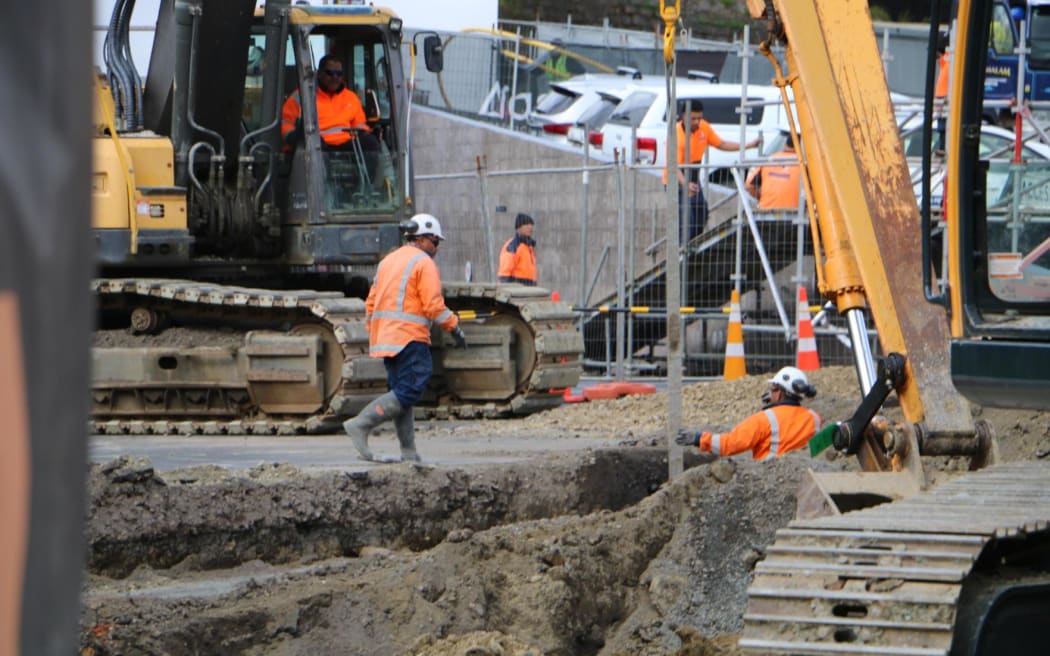
A main sewer line collapsed in Auckland, leaving a massive sinkhole 13 metres deep on a private property in Parnell, Auckland. Photo: RNZ / Jordan Dunn
Auckland residents were being asked not to swim at any inner-city beaches.
"As we haven't yet been able to confirm overflow locations, we have raised black water quality pins on Safeswim and are urging Aucklanders to avoid swimming, fishing and recreational activity in the Waitematā Harbour," Bourne said.
"Warning signs are currently being erected at all inner-city beaches."
He said once the sewer blockage has been cleared, wastewater will be able to flow through the pipe again and it could be repaired.
Bourne said advice from geotechnical engineers will guide its approach for repairs.

The Safeswim website showed no inner-city beaches were suitable for swimming, with "very high risk" of illness. Photo: Safeswim
'It shocked me' - deputy mayor
Auckland Deputy Mayor Desley Simpson has been to see the sinkhole, and said she was shocked at its size - 20m wide.
"It shocked me actually how big it was and… I was asking them, is it going to get any bigger? But they're working very hard to pack around it to stop it getting any bigger.
"It's a significant hole. If I was positive, I would say it's not on a road, it's on private property and it's not going to disrupt traffic. But it is a significant piece of work and infrastructure that Watercare have to fix."
Simpson said crews were out working to find any sewage overflows.
"It will have some emergency overflows, and Watercare are out at the moment just going right through, manhole by manhole all the way along through to Western Springs, Pt Chevalier, just to check out if the emergency overflow points are being compromised."
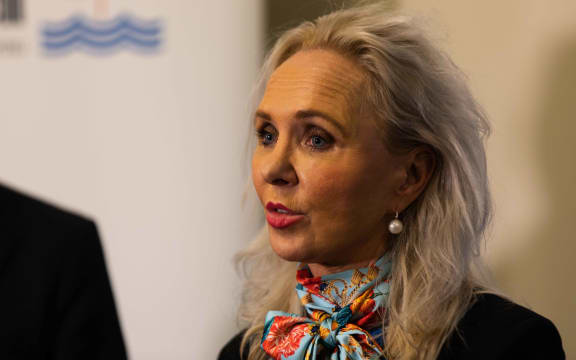
Desley Simpson. Photo: RNZ / Dan Cook
She said it appeared to be a result of the storms earlier this year, and older infrastructure - Parnell's sewer pipes date back to the 1920s.
"Watercare tell me that this is the sort of thing that happens at the tail-end of long, bad weather events like we've had.
"We've recognised that we do have old pipes, that they are potentially about to be compromised and that's why we've already made tracks to invest in more infrastructure, to take pressure off those pipes."
She said crews had been using cameras to get a picture of the state of wastewater pipes in the city's older suburbs.
"We're trying to get in first and see where the compromised areas are, but it's a big job."

